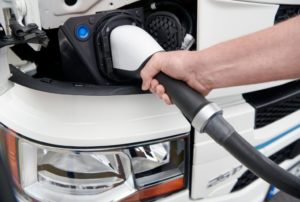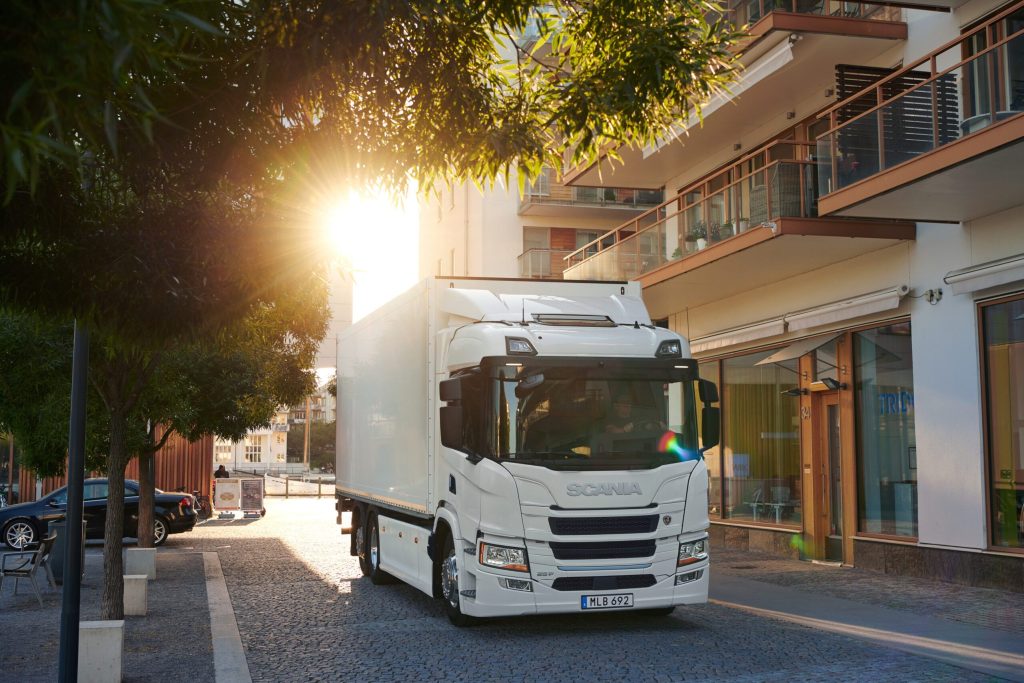Scania today launched a series of electric trucks, some plug-in hybrid and others fully electric, with the aim to be a leader in the transition to a sustainable transportation system – particularly in urban last-mile delivery applications.
One commercial benefit of electric trucks is that they enable delivery providers to be compliant with rules in urban areas that increasingly prohibit internal combustion engines. Perhaps more significantly, though, the silent powertrain means operators can increase utilization by making deliveries early in the morning and late into the evening. This enables drivers to avoid traffic and park more easily; studies show that off-peak deliveries can be more than 30 percent faster than equivalent daytime routes.
Scania’s fully electric truck can be equipped with batteries capable of storing from 165 to 300 kWh, which at the higher end will provide about 155 miles of range. And in addition to general cargo and temperature-controlled transports, e-trucks can be productively configured as tow truck, tipper truck, concrete mixers and refuse collectors as well as for fire and rescue services.
“It is with a great deal of pride that we announce the start of Scania’s long-term electrification commitment. We will over the coming years annually launch electrified products for our entire range and we are presently reorganizing our production towards that end. Of particular significance is that we will in a few years’ time, also introduce long-distance electric trucks adapted for fast charging during drivers’ compulsory 45-minute rest periods.”
SCANIA PRESIDENT AND CEO HENRIK HENRIKSSON

Charging
Using the CCS connector at 130 kW DC, the 165 kWh pack can be charged in less than 55 minutes and the 300 kWh pack can be charged in less than 100 minutes. Batteries will also be charged while driving through regenerative braking.
“Scania signifies premium quality and needless to say that characterizes our electrified trucks as well,” said Anders Lampinen, Director of New Technologies. “We are convinced that progressive customers will be eager to lead the way into electrification by taking initial steps to future-proof their fleets,” says Lampinen. “In major transport companies with large fleets, implementation gives them an early opportunity to gain experience in this area. Meanwhile, we know that large transport buyers are interested in reducing their carbon footprints.”
For more information about EVs and EV charging, I invite you to follow me on LinkedIn and visit my other posts.

